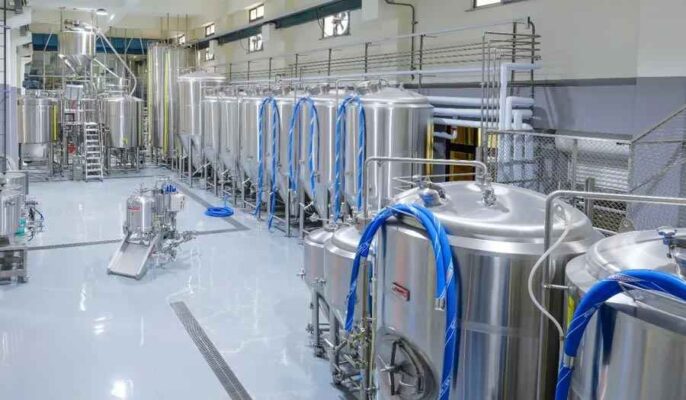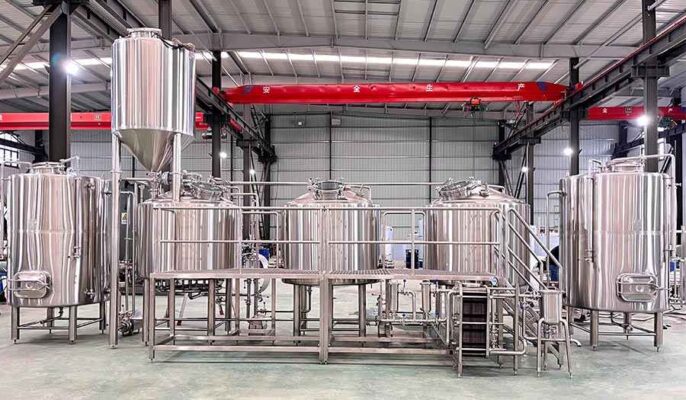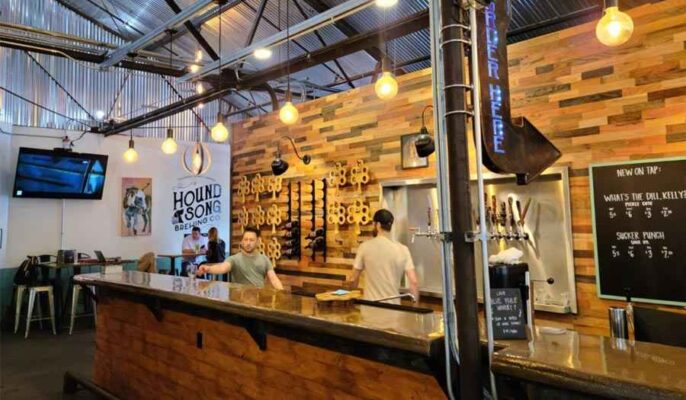Every brewery project is different, and there are many things to consider when opening a brewery. The initial questions and their answers provide the outline and guide next chats. In this article, Micet will look at the elements that apply to most brewing projects and will be discussed below. If you’re interested in what you need to know before opening a brewery, read on.
What containers does a brewery need?
With the initial questions, we discussed how many brewery containers we wanted. If it was a 4 vessel brewing system then it would have a mash tun, lauter tun, kettle and whirlpool. For a 3 container system, there is an option. Choosing a combo mash/strainer or a combo kettle/whirlpool? Each has its advantages and disadvantages.

Brewhouse/Filter Combination
When brewing , brewers often find that brewing time is shorter with this setup. Having separate kettles and whirlpools means you can start your second filtration as soon as your first brew goes into the whirlpool.
Additionally, a mini heat exchanger can be installed between the kettle and the whirlpool. lower the temperature of your wort to add aroma hops. Brewers will see better results by adding aroma hops to the cooler wort in the whirlpool.
Combine a kettle and whirlpool
If you want to do a layered mash, then using separate mash tuns means your mash temperatures are more even. If you use a mash/lautering barrel combination, the mash tends to experience temperature stratification. Additionally, this combined form of brewery makes the mashing process easier.
Next, after transferring the mash to the lauter tun, the lauter tun can be sized for a thinner bed, better runoff and efficiency.
We lock in brewery container options in a follow-up discussion.
Even with a 2-container system we have a choice to make. We can use the “German brewing system”, although it is only 2 ships, it is actually 3 tanks.
- Three tanks for mashing/boiling, filtering and whirlpooling
- Three tanks for mash/filtration, HLT and kettle/whirlpool
For example, with option 1, the filter tank is above the whirlpool, so the footprint is good for 2 vessels, but you actually have 3 vessels.
Do you want a grain conveyor system?
This also usually depends on the size and budget of the brewery. I generally recommend against using a grain conveyor system if the system capacity is 800 liters or less.
If your capacity exceeds 1,500 liters, then having a grain conveyor system is definitely a more suitable option. It saves labor hours, prevents injuries, and allows for better mash mixing based on the brewery design.
Additionally, on larger systems, the type of grinder you choose to buy also becomes a consideration. When planning brewery production, the efficiency of the brewery becomes key.
Consistent crushing is critical to increasing brewery productivity, which means you may need to upgrade your malt grinder. While the cost of upgrading a malt grinder is high, you will recoup the cost over time.

Fermenter Vessel (FV) and Unitank Design
This isn’t a big deal, but most breweries these days choose to use unit tanks rather than dedicated fermenters. This also means you need to equip these unit tanks with carbide. The carbon fossil is usually placed above the cone inside the tank.
If you open a brewpub, space will be at a premium and you may want a “leaner” tank. Of course, if the building height permits, you can also choose to stack fermentation tanks. Thus, you can install the required number of tanks in a smaller space to meet sales demand based on sales forecasts.
If your brewing process requires the use of large amounts of hops, then you will need to have a dedicated and large enough hop port. Next, we also need to discuss where you want your manhole to be: do you want a side manhole or a top manhole? If you are using a top manhole, you may not need a jump port.
Also, we also need to discuss the working pressure of the tank and rotation. In modern breweries, most tanks are equipped with rotary valves, and Chinese-made tanks have an operating pressure of 30 PSI. Don’t forget those PRV (Pressure Relief) valves!
Do you want a beer can (BBT)?
There are now some breweries that are choosing not to use BBT. They only use FV and the packages there. If you are a brewpub and sell everything on tap, this might be for you.
If you do prefer BBT, then a rule of thumb is to get 1 BBT for every 5 FV you have. This is a guide, the reality is that depending on your brewing style you may only need one BBT to brew 8 to 10 FVs. Of course, if you don’t know how to configure it, you can contact the Micet group. Our engineers will help you solve these problems.
What are the regulations in your country?
Some countries are stricter than others when it comes to steam. If you are opening a brewpub in a built-up area, you may not be able to install a steam engine due to health and safety regulations. If you are in Australia, you will need AS1210 certification and a design registration number for the tank. If you plan to open a brewery in Europe, then you need CE certification. We will discuss this in a next discussion and identify the selected manufacturer and its circumstances.
Would you like to pilot a brewing system?
Having a pilot brewing system allows you to try out new brewing recipes or ingredients, helping you determine if it’s worth expanding to a larger brewing system for production.
Having a pilot allows you to have fun and brew some super niche beers to keep your “craft” customers happy without having to mass-produce them.
Can it be stored offsite?
Many of our customers are considering doing some small-scale beer bottling in their pubs. When you get into the filling industry, actual empty cans can take up a lot of space. When it comes to opening a taproom, you want to provide the largest floor space for your customers.
I often ask clients if offsite storage is possible. Often, warehouses are nearby but in areas with cheaper rents.
If you plan on bottling beer, you’ll most likely hire a delivery driver. This means you can also transport goods to the brewery for production when needed.
Need to filter?
small home brewers may not choose to filter their beers. But in a production brewery, you may need some form of separation technology, depending on the size of the brewery and the project budget. Micet group will help you explore all available options and choose the one that best suits your needs and financial situation. If you need help, please contact us.

Production and operation status
Many customers often ask if we can help them install, get their brewery operational and train their team. Before, Micet group engineers have helped install and commission brewery projects in many other countries. Now because of the impact of Covid-19, engineers may not be able to leave China. But we will debug the equipment before leaving the factory and mark the number on the connected pipes. You only need to connect according to the data to complete the installation of the brewery equipment.
Follow-up questions and conclusions
The nine questions mentioned above can help you get an overview of your brewery. Along with the brewery we’ll learn some key details. There are a lot of factors that need to be determined when starting a brewery, so it’s a process that takes time. It usually takes about 30 days from initial contact for equipment list to placing an order. This is a long process. We hope you will have the patience to discuss your brewery project with us.
Micet group can provide you with a complete turnkey solution to suit your needs. We have 15 years of experience in equipment production and design, which can help you reduce the occurrence of errors and also provide you with professional technical support.




